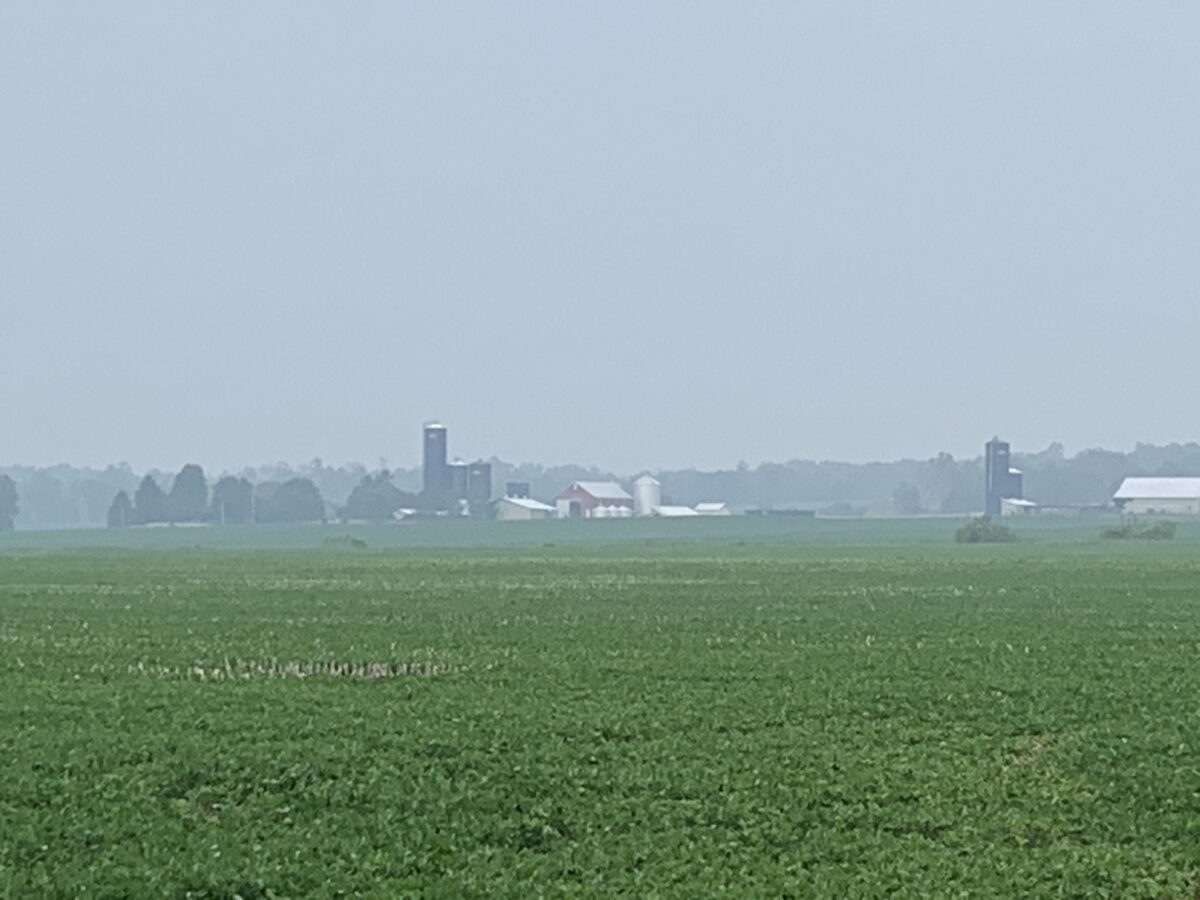It’s hard to imagine Canadian wildfire smoke leading to canceled softball games in western Wayne County, but poor air quality has begun impacting local residents.
Just a few weeks after an industrial plastics fire in Richmond filled area skies with black smoke and made national news, unfavorable air quality alerts have returned to the area because of a disaster much further away.
Indiana Department of Environmental Management issued Air Quality Action Days on June 27 and 28 throughout Indiana.
When air quality levels reached unhealthy levels throughout several areas, state officials said Hoosiers should reduce or avoid exertion and heavy work outdoors during those conditions.
The air quality index, or AQI, is on a scale of 0 to 500. Good air measures 0-50; moderate is 51-100; and unhealthy air for sensitive groups is 101-150. Unhealthy air that can affect everyone measures at 151-200 and is red on the color chart. Numbers become increasingly purple for very unhealthy air potentially causing more serious effects (201-300). Health emergency warnings would be issued for hazardous levels (301-500).
Lincoln High School graduate Lindsey Monroe, a meteorologist for WTHR-13 in Indianapolis, presented graphics during her early June 28 forecast that showed all of Indiana was red or purple at that time.
Noting the large, uncommon purple area covering central Indiana, Monroe said she and longtime colleague Chuck Lofton had never experienced air quality that poor throughout the region.
Christine Stinson, Wayne County Health Department’s executive director, recommends area residents seek updates from IDEM, which oversees air quality actions and monitors and interprets related data.
“I can tell you that it is never a good thing to have prolonged outdoor activities when we are in the unhealthy index,” Stinson said. “Especially if you have asthma, chronic obstructive pulmonary disease (COPD), or are elderly or a young child. You should limit your time being outdoors. Masks can help, but doing strenuous activities, in the heat, with unhealthy air quality, is not advised.”
Fortunately, John Welch, a meteorologist with IDEM’s Office of Air Quality, said June 28 that he expected conditions to improve within two days. Smoke had drifted southward over the last few days, and he expected the flow to slowly drift north again over the next 24 to 36 hours.
IDEM encourages Hoosiers to do their part in reducing fine particles in the air, also called PM2.5, when air quality is low.
PM2.5 is composed of microscopic dust, soot and liquid that settles into the lungs and cannot be easily exhaled.
IDEM’s suggestions include:
- Carpool or use public transportation.
- Avoid using the drive-through and combine errands into one trip.
- Turn off engines instead of idling for long periods of time.
- Fuel vehicles after dusk
- Avoid using gas-powered equipment. Mow the lawn in late evening.
- Conserve energy by turning off lights and place air conditioners on a higher setting.
Higher smoke levels can make breathing difficult for some people, especially those with preexisting conditions such as lung disease, chronic heart disease or diabetes.
About one in 10 adult Hoosiers and one in 15 children have asthma, according to Indiana Joint Asthma Coalition.
American Lung Association says those experiencing worsening symptoms, such as wheezing, shortness of breath, difficulty taking a full breath, chest heaviness, lightheadedness and dizziness, should contact their physician promptly.
Patients should follow their asthma or COPD action plans previously developed with their provider, and those using oxygen should not adjust their intake levels without seeking medical advice, ALA staff said.
Additional resources
- Indiana Department of Environmental Management offers near real-time air quality maps and data at https://www.in.gov/idem/airmonitoring/air-quality-data/.
- The website SmogWatch.IN.gov provides daily air quality forecasts for ozone and fine particulates, monitoring data for all pollutants and current weather conditions throughout the state.
- American Lung Association offers free chats with experts on its Lung Helpline at 1-800-586-4872, which shares the same number with its Tobacco QuitLine.
- Indiana Joint Asthma Coalition offers free articles, digital booklets for parents, caregivers, nurses and school officials, links to asthma education opportunities throughout the state, and other resources at https://indianactsi.org/community/initiatives/.
A version of this article appeared in the July 5 2023 print edition of the Western Wayne News.

